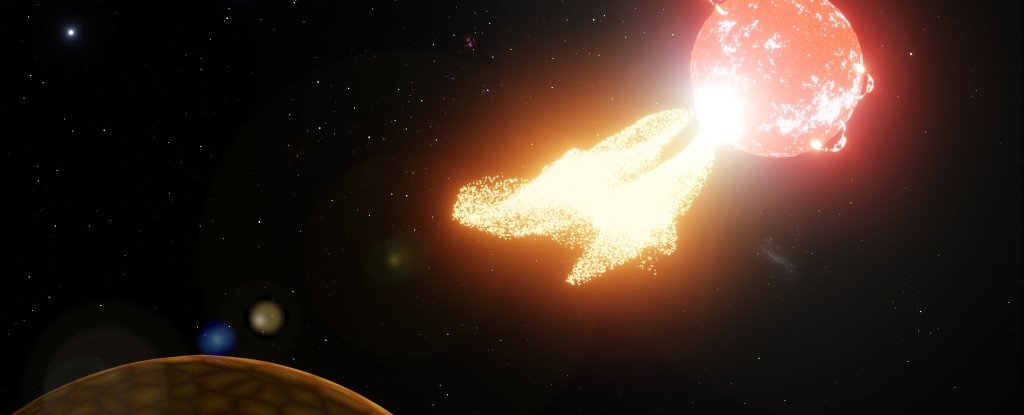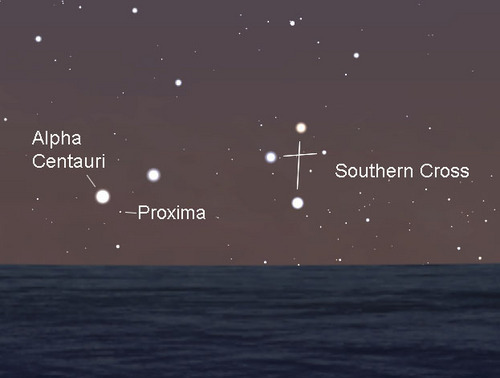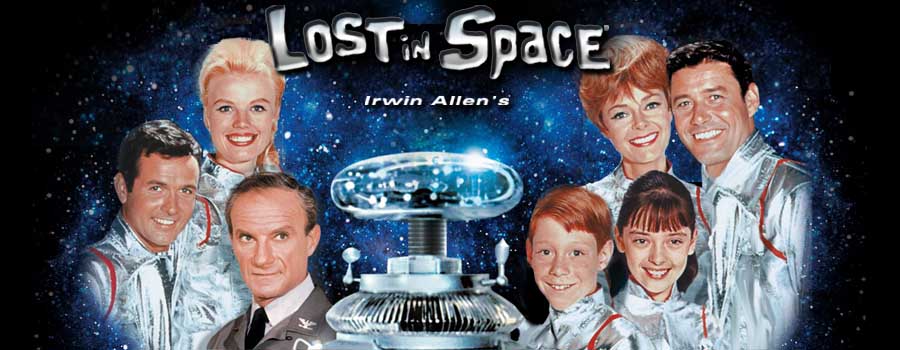
Posted on 12/09/2020 10:17:59 AM PST by Red Badger

Artist's impression of a flare from Proxima Centauri. (Mark Myers/OzGrav
We already had a bit of an inkling that our nearest stellar neighbour might be an inhospitable place. In 2017, red dwarf Proxima Centauri was caught belching out a colossal flare 10 times more powerful than the largest eruptions from the Sun, dampening hopes for habitable conditions on the rocky world orbiting it, Proxima Centauri b.
The outlook for life as we know it just got even more grim. A new discovery has given us evidence that Proxima Centauri may be releasing Sun-like coronal mass ejections, in which vast quantities of ionised plasma and electromagnetic radiation are launched into space, and which are much larger than flares.
"Astronomers have recently found there are two 'Earth-like' rocky planets around Proxima Centauri, one within the 'habitable zone' where any water could be in liquid form," said astronomer Andrew Zic of the University of Sydney in Australia.
"But given Proxima Centauri is a cool, small red dwarf star, it means this habitable zone is very close to the star; much closer in than Mercury is to our Sun. What our research shows is that this makes the planets very vulnerable to dangerous ionising radiation that could effectively sterilise the planets."
Proxima Centauri is Earth's nearest neighbour, just 4.2 light-years away. And the 2016 discovery of a rocky world (like Earth, Venus and Mars) in the star's habitable zone (close enough that water on the surface wouldn't freeze and not so close that it would vaporise) raised hopes that we might be able to find extraterrestrial life nearby.
But although red dwarf stars are small and cool, they have a tendency to be violent wee beasts. They lash their surroundings with frequent and powerful stellar flares, which scientists have interpreted as bad news for the possibility of life and habitability as we know it.
It's not the flares themselves that would necessarily be the problem, but coronal mass ejections. The two types of eruption often are linked in the Sun, with the most powerful flares accompanied by CMEs, and while solar flares can disrupt radio communications, it's CMEs that can cause the real problems, such as disrupting power grids. But we're relatively protected here on Earth.
"Our own Sun regularly emits hot clouds of ionised particles during what we call 'coronal mass ejections'. But given the Sun is much hotter than Proxima Centauri and other red-dwarf stars, our 'habitable zone' is far from the Sun's surface, meaning the Earth is a relatively long way from these events," Zic said.
"Further, the Earth has a very powerful planetary magnetic field that shields us from these intense blasts of solar plasma."
Planets orbiting red dwarf stars in close proximity may not be so lucky; even a magnetic field might not be enough protection.
However, although we've seen plenty of red dwarf flares, evidence for CMEs from red dwarf stars is scarce and subject to interpretation. Candidate CME-like behaviour identified in red dwarf stars, such as prolonged X-ray absorption, or blueshifted Balmer lines, could still be the product of flares.
Here in the Solar System, when the Sun releases a CME, it often releases a radio burst at the same time. Not to be confused with fast radio bursts, these low-frequency solar radio bursts are caused by different particle acceleration processes associated with the CME.
These bursts could indicate CME activity. But astronomers haven't detected many solar-like radio bursts from red dwarf stars. Prior to Zic's team's work, only one coherent solar-like burst had been recorded, all the way back in 1982; a handful of other detections were from single-dish telescopes, and therefore susceptible to terrestrial interference.
So Zic and his team set about looking for robust evidence of a radio flare from Proxima Centauri. They used the Zadko Telescope in Western Australia and data from NASA's TESS to obtain optical data, and the ANU 2.3m Telescope at Siding Spring Observatory for spectroscopic observations.
Meanwhile, the incredibly powerful radio telescope array of the Australian Square Kilometre Array Pathfinder (ASKAP) in the West Australian desert was used to take simultaneous observations in low-frequency radio.
And sure enough they caught a flare and a series of radio bursts. The simultaneous observations allowed the team to link the two events; with a probability of less than one in 128,000 that they weren't related.
The characteristics of the burst were very close to a solar burst Type IV. This is a type of long-duration burst that, for the Sun, is thought to be caused by the continuous injection of energetic electrons into post-flare magnetic structures following a CME.
"This is an exciting result from ASKAP. The incredible data quality allowed us to view the stellar flare from Proxima Centauri over its full evolution in amazing detail," said astronomer Tara Murphy of the University of Sydney.
"Most importantly, we can see polarised light, which is a signature of these events. It's a bit like looking at the star with sunglasses on. Once ASKAP is operating in full survey mode we should be able to observe many more events on nearby stars."
Although it's not direct evidence of a red dwarf CME, it's the most compelling evidence for a solar-like radio burst from another star to date, the researchers said. And, based on the properties of solar radio bursts, it seems very consistent with a CME.
"This is probably bad news on the space weather front. It seems likely that the galaxy's most common stars - red dwarfs - won't be great places to find life as we know it," Zic said.
The research has been published in The Astrophysical Journal.
>> red dwarf Proxima Centauri was caught belching out a colossal flare 10 times more powerful than the largest eruptions<<
Rosarita Refries and beer makes one inhospitable to life.
That wasn’t Proxima Centauri belching out a colossal flare, it was Jerry Nadler!!
Wow, the Democrat Party Cabal (including "Science!") continues becoming progressively more Gloom-and-Doom as this 2020 Presidential (Democrat-perpetrated) election-fraud year drags on ...
/s
I had such high hopes. I hate it when they get dashed against the rocks like that. What a miserable Christmas this is going to be with my dampened hopes.
Rosarita Refries.......I had those for lunch!...................


Habitable for us, maybe. Who’s to say other species need oxygen and water?
There is no life out there.
When I played with the numbers years past I got 0.000000000000852687% chance that life is at any given star (based on the Drake equation).
Not considering the ability to travel or communicate over such distances (makes it all sort of a moot point), just based on the probability of life, when you look at a spec in the sky at night and wonder, accept that there is only a 0.000000000000852687% chance that life is there.
Even if we offset that with the vast size of our galaxy (assume 200,000,000,000 stars), we are still just at a .l7% probability for the entire Milky Way. That’s .17%, as in 99.83% chance the answer is no.
Most of space is cold, a void, dark, and if you are near a star, or on a rock near it, it’s likely a very inhospitable place.

"On October 16, 1997, the United States is gearing up to colonize space. The Jupiter 2, a futuristic saucer-shaped spacecraft, stands on its launch pad undergoing final preparations.
Its mission is to take a single family on a five-and-a-half-year journey to an Earthlike planet orbiting the star Alpha Centauri".
https://en.wikipedia.org/wiki/Lost_in_Space#Overview

_________________________________________________

Hope the little green men there read this and hop in their saucers to move to another solar system.

Your math is correct as far as it goes, but the Milky Way is not the entire universe. If we consider your probability to be accurate and look at 1,000 galaxies of similar size as the Milky Way, the probability of no life drops to about 18%.
Of course any calculation based on the Drake equation is suspect. The equation is a product of multiple probabilities, not all of which are well-known. IIRC there is at least one that could be anywhere between zero and one, meaning you can obtain pretty much any value you want from the equation. For example we have no clue what fraction of planets that develop life will develop intelligence, what fraction of intelligent species will develop communication means that we can detect, or even the fraction of planets with suitable conditions that will actually develop life. The value of the Drake equation is the consideration of the things that must happen for us to make contact, not in any actual calculation of the likelihood of that contact actually happening.
Somebody has to be ‘first’.............. why not US?................
Dwarf stars have a reputation for way more intense flare activity—not new.
LOL

"We need to talk about your flare."
I agree, but even then, we’re still at 82% “no” and not past the issue of distance (i.e. travel and/or communication).
While I like good scifi (very little out there), I tend to believe that time is linear and C is absolute.

Like you, I don’t believe we’re going to make contact. However, I think I failed to clearly word my previous post. If we accept the probability you gave, then in 1000 Milky Way sized galaxies, the probability of 82% is the probability that there IS life, not the probability that there isn’t.
Personally I do think it’s likely that there is life somewhere out there. The universe is huge, and there are many opportunities for it to have developed. But that very fact of the size of the uniois why we will likely never make contact. Where do we look? It would be extremely fortuitous to pick out the right planet to point our radio telescope at. There’s also the added issue of temporal displacement — they might have been out there but quit broadcasting thousands or millions of years before we were capable of listening.
Even if they’re out there, and they’re broadcasting now, they may be so far away that we can’t distinguish the signal from background noise. We are unintentionally sending out weak signals; one would think that’s the type of signal we’re looking for. If it’s a planet that’s millions of light years away, we’d probably not detect it. The case against this is that another intelligence might intentionally broadcast a strong signal. But why would they, and why would they direct it toward us? We are listening; we’re not sending. That’s in part because it is technically easier that way, but I’d say it’s also a matter of getting results — we know right away if we listen and detect a signal; it might be millions or billions of years if we send a signal and await a reply. Other intelligences might well think likewise.
I have no real scientific basis to think this way; it’s just a personal opinion. Like I said, we really have no idea how improbable it is that life will arise. I’m a hard-headed realist like you; c is the speed limit — even if we did make contact , there’d be essentially no chance we’d ever physically meet them. Sci-fi is fun and enjoyable, but I’m like you — meeting aliens is not realistic.
Disclaimer: Opinions posted on Free Republic are those of the individual posters and do not necessarily represent the opinion of Free Republic or its management. All materials posted herein are protected by copyright law and the exemption for fair use of copyrighted works.